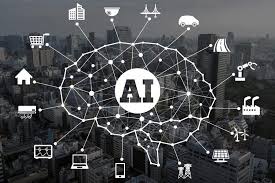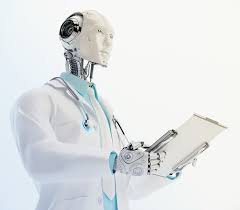Source: edexlive.com
At about $1.2 trillion globally, the fashion industry is one of the biggest in the world. Associated mostly with the glitz and glamour, the modern-day fashion world is moving at a rapid and aggressive pace where designers are expected to be not only creative but also experimental and innovative in their thinking, approach and designs. Keeping this in mind, designers need to be a level ahead of the fashion curve and set the tone for constantly changing iconic designs.
Technology in recent times had undergone a drastic change especially in the fashion industry and in the last couple of years; the retail brands have taken an algorithmic approach to fashion. Artificial Intelligence (AI) is one of the emerging technologies across the world and the fashion world has also had its fair share of impact. From manufacturing to creatively retailing their brands, fashion designers are utilising the new age technologies like AI to the fullest. This has taken the relationship between ‘Innovation’ and ‘Creativity’ to the next level.
Artificial Intelligence can undertake human-like decisions. With computers becoming smarter, accessible and compact, AI has started making a mark in the industry and how. AI is primarily “Narrow” and “General” – Narrow AI is when AI is doing a specific narrowly defined task, normally outperforming humans, and Artificial general intelligence or “strong AI” – when it can undertake different tasks rather than some narrowly defined task involving human intelligence and at a rate that would be way faster.
In such a scenario, AI becomes the perfect solution for the fashion industry, to analyze customer preferences and corroborate the data with the help of the platform. So, whether brands talk of AI in robotics or supply chain, production, marketing, sales or any other field, it is using what is called “predictive analytics” to predict a particular outcome and therefore to take a particular action-based on that prediction. For example, giants like Forever 21 are using visual search technology that allows their customer to search for clothing in the same way they think about it.
From helping companies to calculate risk-reward in business to find the shortest route to deliver your products to the customers, AI has made inroads into the industry. So much so that it is one of the highest paying jobs today with a perennial dearth of professionals in this area. Besides, AI is helping the fashion industry in creating what is called a hologram of the “dress” or the “model”. What this means is that the dresses and/or models themselves would be holographic images of the actuals saving time, travel and money. This could be termed as Virtual Reality/Augmented Reality.
Fashion brands across sectors are continuously looking for new ways to get their products in front of buyers and create awareness and demand in the market. Increasingly, brands are utilising AI and machine learning to maximise customer’s shopping experience and enhance the sales processes using predictive analytics and guided sales processes.
Customers are already experiencing Augmented Reality in the Fashion industry where they can try out dresses without actually having to wear them (Magic Mirror). In a way, this is helping the lifestyle industry to save on a lot of time and money to enhance the customer experience. The use of computer “bots” is another phenomenon catching up to enhance the online customer experience. These channels of technology are primarily utilised by brands to better understand customer behaviour and make customised products according to the analysis. These products will accordingly suffice individual needs as opposed to offering standard, one-size-fits-all solutions.
Looking at the constant change in the fashion industry, AI technologies are for sure adding value in every part of the sector, be it the design process and manufacturing processes to sales or marketing of finished products. Tech is smarter than ever in the fashion industry.


